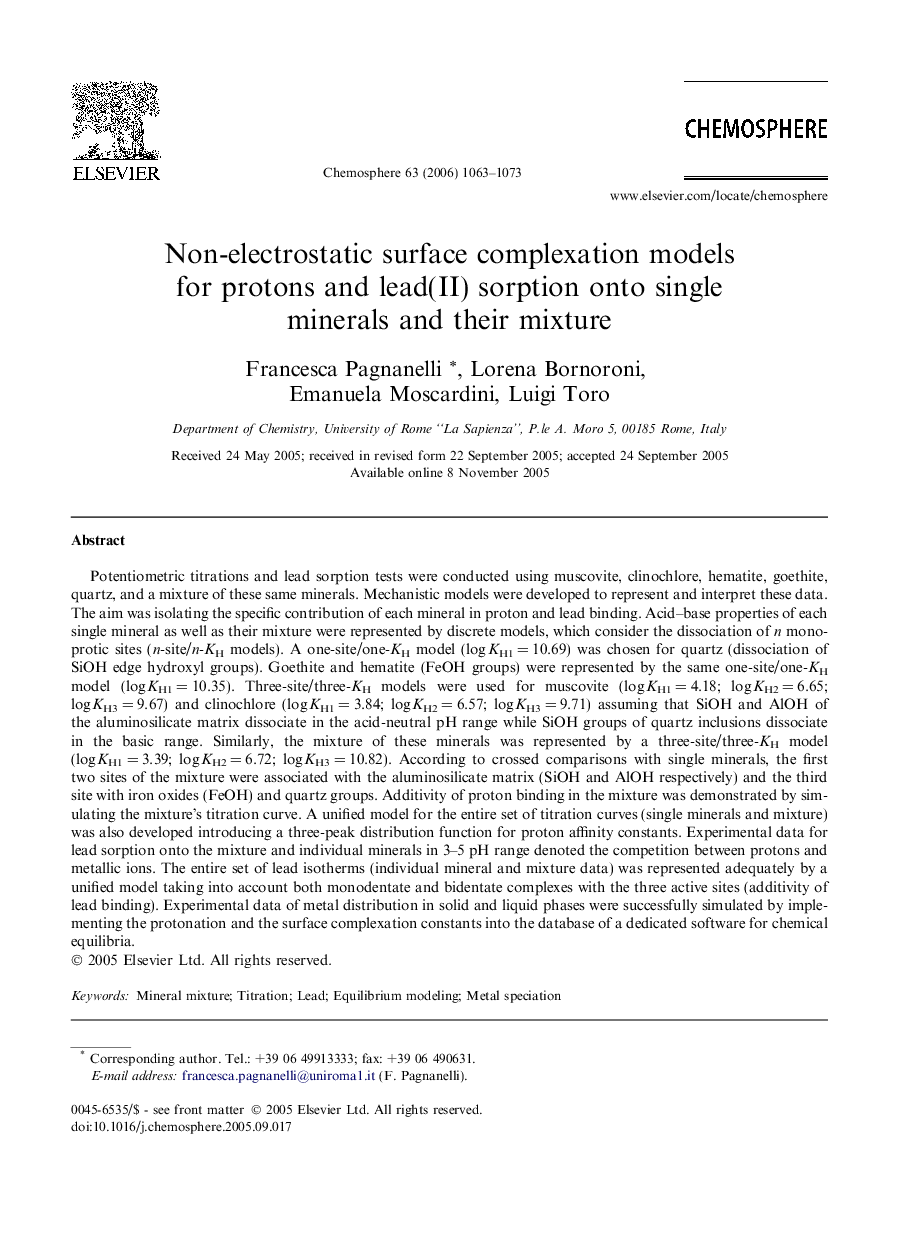| کد مقاله | کد نشریه | سال انتشار | مقاله انگلیسی | نسخه تمام متن |
|---|---|---|---|---|
| 4416713 | 1307796 | 2006 | 11 صفحه PDF | دانلود رایگان |

Potentiometric titrations and lead sorption tests were conducted using muscovite, clinochlore, hematite, goethite, quartz, and a mixture of these same minerals. Mechanistic models were developed to represent and interpret these data. The aim was isolating the specific contribution of each mineral in proton and lead binding. Acid–base properties of each single mineral as well as their mixture were represented by discrete models, which consider the dissociation of n monoprotic sites (n-site/n-KH models). A one-site/one-KH model (log KH1 = 10.69) was chosen for quartz (dissociation of SiOH edge hydroxyl groups). Goethite and hematite (FeOH groups) were represented by the same one-site/one-KH model (log KH1 = 10.35). Three-site/three-KH models were used for muscovite (log KH1 = 4.18; log KH2 = 6.65; log KH3 = 9.67) and clinochlore (log KH1 = 3.84; log KH2 = 6.57; log KH3 = 9.71) assuming that SiOH and AlOH of the aluminosilicate matrix dissociate in the acid-neutral pH range while SiOH groups of quartz inclusions dissociate in the basic range. Similarly, the mixture of these minerals was represented by a three-site/three-KH model (log KH1 = 3.39; log KH2 = 6.72; log KH3 = 10.82). According to crossed comparisons with single minerals, the first two sites of the mixture were associated with the aluminosilicate matrix (SiOH and AlOH respectively) and the third site with iron oxides (FeOH) and quartz groups. Additivity of proton binding in the mixture was demonstrated by simulating the mixture’s titration curve. A unified model for the entire set of titration curves (single minerals and mixture) was also developed introducing a three-peak distribution function for proton affinity constants. Experimental data for lead sorption onto the mixture and individual minerals in 3–5 pH range denoted the competition between protons and metallic ions. The entire set of lead isotherms (individual mineral and mixture data) was represented adequately by a unified model taking into account both monodentate and bidentate complexes with the three active sites (additivity of lead binding). Experimental data of metal distribution in solid and liquid phases were successfully simulated by implementing the protonation and the surface complexation constants into the database of a dedicated software for chemical equilibria.
Journal: Chemosphere - Volume 63, Issue 7, May 2006, Pages 1063–1073